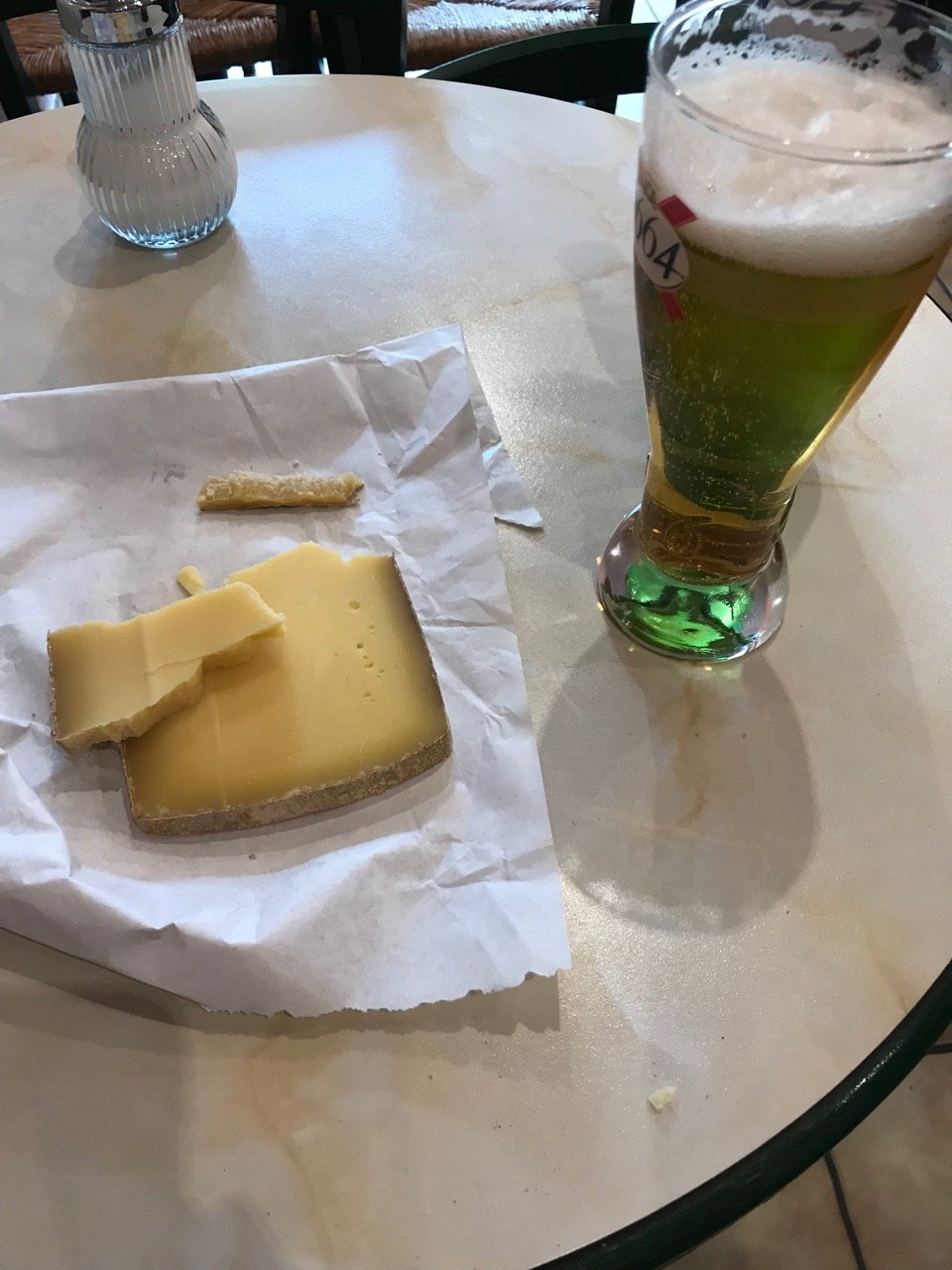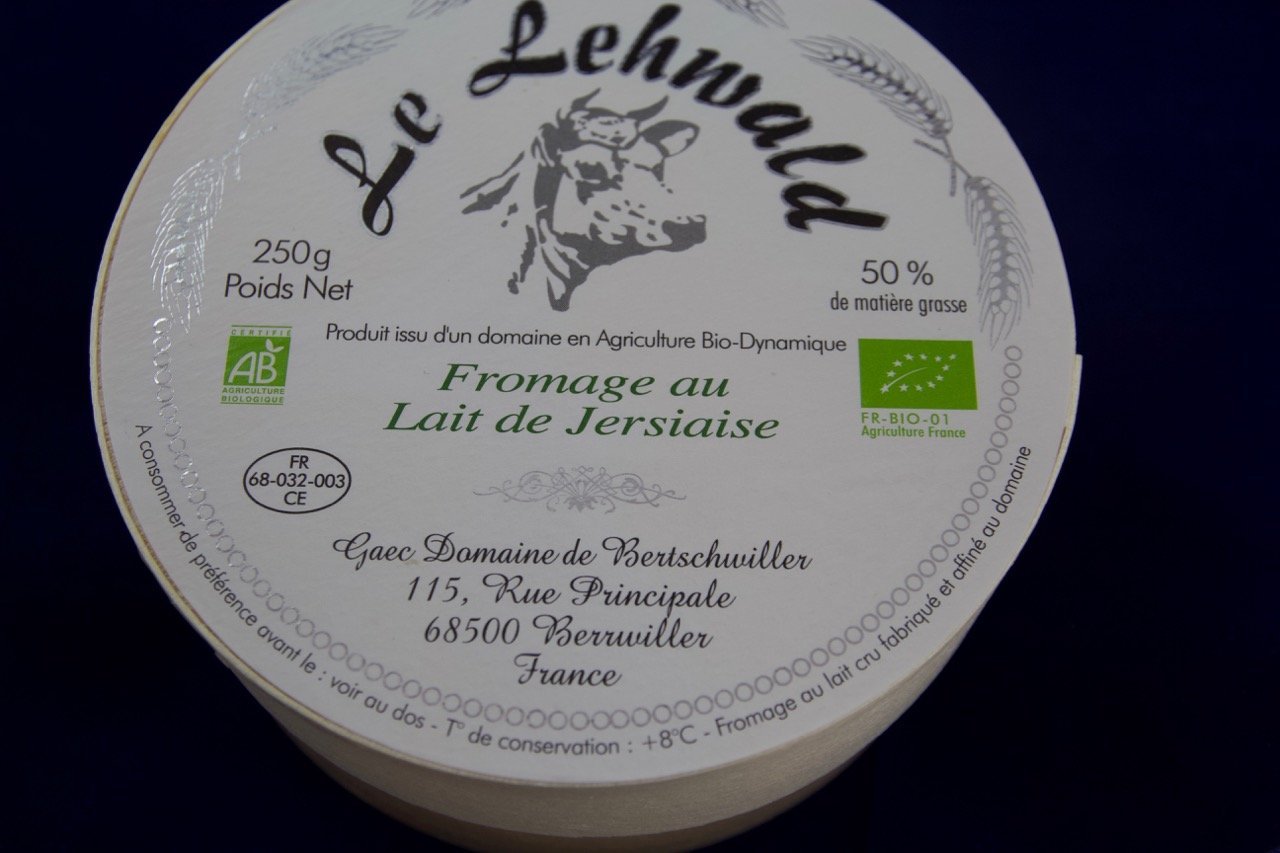If you haven’t been to Alsace yet, you ought to go there. Especially if you enjoy the rustic German culture, but in Alsace handled with French elegance. They are funny the Alsatians, they pronounce the H in front of words, like in Clos Ste Hune for instance. Or Hugel. Not very French.
Most people visiting this area in the very north east of France, bordering Germany, go there to visit the small picturesque villages and vineyards on the plains east of the Vosges mountain range. Can’t blame anyone for doing just that. Have done it myself, many times.
Anyway, if you’re on tour, be it cheese or wine, it is convenient to stay in Colmar.

Not only Alsace
My concern is cheese, of course, and it is typical that the most famous cheese from Alsace comes from west of the mountains that in all aspects protects the plains on the east side. Then we’re well into Lorraine a well. From history Alsace and Lorraine were closely connected.
Munster is the most famous of Alsacian cheeses, and has taken its name from the town of Munster, situated in the middle of the mountain range. But originally Munster Gerome was made on the plains west of the mountains, while Munster was made in Alsace. Today there is no difference, it’s Munster.
Originally made by the monks coming to Alsace to settle some 1300 years ago. Washed rind as came to be the tradition at that time. Today made at farms and dairies, so there is a handmade version and there is an industrial. Look for Fermier.
Not to be neither forgotten nor hidden in your fridge. Too oozing odor for that as usually is the case with washed rind cheeses. Orangish rind and sometimes a bit sticky, but nothing near for example Epoisses.
Munster is best on country bread with a glass of Pinot Gris or Gewurztraminer. The latter being the most common pairing up through the years. Locally they make more everyday use of the cheese than at least I do. Tartiflette and more commonly in Alsace, with cumin and boiled potatoes. This latter stems from the fact that the washed rind cheeses have been called the poor man’s meat.
Do not let yourself be frightened off by the smell, the flavour is mild and gentle, but a fermier cheese is more outspoken than an industrial one. My recommendation is of course to look for a >em>Fermier, that’s the best cheese. From a farm dairy in other words (for the not so fluent in French). Same with wine, some are industrial while others are garage wines.
More than Munster
However, Alsace has more to offer than Munster. Somewhat down the same street is Le Carré de l’Est. Coming from Lorraine, not Alsace. The square cheese from the east, that’s what the name means. Found here in Oslo, so it cannot be all that uncommon. Very soft. It’s almost runny straight from the fridge. Pale coloured rind, but definitely washed. In the stinker category, but as often with these cheeses taste is round and mellow. Very good cheese, just “smear” it a slice of bread.
Bargkass – the Cheese gem
Moving in the direction of a firmer cheese, Alsace has a not very well known, but very tasteful cheese called Bargkass; mountain cheese that means. From the Vosges mountains and sometimes called Gruyère of Alsace. As far as I know, always a farm dairy cheese, made at the same farm dairies that make Munster, and in period when the supply of milk is abundant. Only milk from the farm’s own herd. Semi firm texture with small holes scattered around and washed rind, but to a lesser degree than the Munster. Matured for three to six months. The less intense washing gives room for some Geotrichum.
This is a cheese that just calls for the most elegant rieslings Alsace can provide. Good cheese demands good wines.
The small and soft ones
The cheeses below are not necessarily traditional for the area, like Munster and Bargkass. There is a small dairy in the town of Berrwiller, all the way south, just north east of Mulhouse. Le Bertschwiller is one og their cheeses. The name is as Alsatian as it can be. Raw (of course), biodynamic cow’s milk. Washed rind, would you believe, seems to be the going in that area. Yellowish paste, creamy and with a piquant taste. Dry salted with sea salt.
From the same dairy comes a booly rins cheese called Le Lehwald. This must be one of a few, if any, bloomy rind cheeses from the area.
I am afraid you have to visit the area to get these cheeses, except the Munster and Le Carré de l’Est. However, I can recommend La Fromagerie St Nicolas. Behind the cathedral in the middle of the city. While there, you also ask for Stephansberg, from the north, not that far away from Strasbourg. Creamy, but turns somewhat crumbly with age. My suggestion is you don’t let it age. Mature riesling in the glass.

Getting there
Simplest is to fly to Zürich and take the train to Colmar. Change at Zürich Hauptbahnhof and Basel if you are unlucky.
You can of course rent a car, but Colmar is not that car friendly. While I was there last autumn, we actually used taxi to and from the various wine makers. (I did not visit any cheese makers at that trip). We made arrangements so the same taxis picked us up on time, wherever we were. Not very expensive as a matter of fact. Before Christmas Colmar is made into a huge Christmas market. Been there, very charming.
